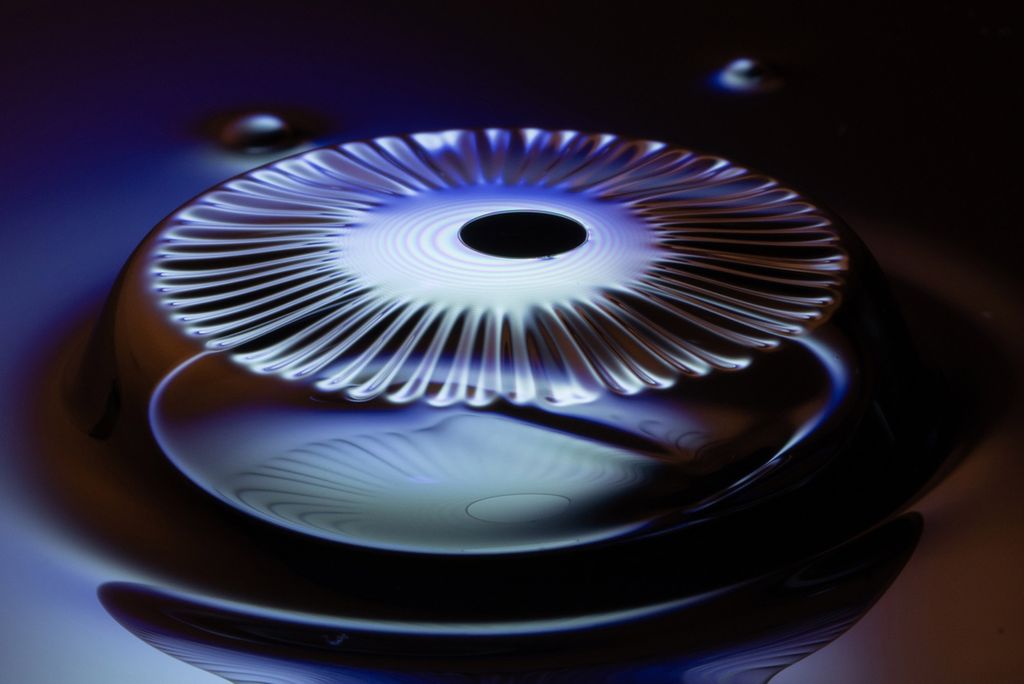From sudsy baths, to fizzy drinks, to molten lava bursting from a volcano, bubbles-air pockets that form when gas is trapped inside a liquid-have offered up a challenge to mathematicians, physicists, and engineers determined to uncover the dynamics at play when they form and when they pop.
"We're surrounded by phenomena we still have so much to learn about," says James Bird, BU College of Engineering associate professor of mechanical engineering and materials science and engineering, and leader of the Fluid Lab.
In a new paper published in Science, Bird and the study's lead author Alexandros Oratis uncover the dynamics of bubbles collapsing in viscous fluids-meaning liquids much thicker than water, like molasses or honey-slowing down the process enough to see what happens when air abruptly exits the bubble's film, something that would normally not be seen with the naked eye.
"When this was first studied, it was assumed that bubble collapse happened because of gravity," says Oratis, a PhD student in mechanical engineering. But Bird, Oratis, and their team have now demonstrated that a bubble's ultimate demise is caused by surface tension, the elastic-like quality a liquid takes on when molecules draw together to minimize surface area, not gravity.
To discover this, Oratis and his team injected air into silicone oil of varying viscosities-the highest being 3 million times thicker than water and, the least, 100,000 times more viscous than water-and carefully inserted a hole in the bubble, releasing the air so the bubble collapsed and formed a uniform wrinkle pattern along its edges. The researchers suspended the silicone oil bubbles upside down, sideways, and upward to see if they would get the same result in different positions. No matter the orientation and position of the bubble, or where the bubble was punctured, the same pattern emerged upon collapse.

"This really suggests that, instead of the number of wrinkles depending on the size of the hole and the force of gravity…surface tension is the driving force," says Bird.
Many less-viscous bubbles, like those in soapy water, pop too quickly for the wrinkles to form at all. Even in liquid one million times thicker than water, the entire collapse of a bubble happens in one-tenth of a second. The researchers used two high-speed cameras to film tiny, one-centimeter bubbles-with one camera facing the bubbles straight on, and the other facing the side-to watch the collapse and expose the pattern in split-second detail. The thickness of the liquid, along with the speed at which the collapse occurs, all determine the wavy pattern that forms along the perimeter of the deflated bubble film. But before now, surface tension was not credited with being responsible for this all-too-common phenomena.
"I think this shows how our physical intuition, because we see [and experience gravity] in everyday life, can be misinterpreted," says Oratis.
The researchers are hopeful that their discovery can open up more dialogue in fields where bubbles are a key factor, such as in natural environments like volcanoes, in glass manufacturing, and even in the medical field, since respiratory droplets form in the lungs when fluid films that span across airways burst when speaking or coughing. The same wrinkling pattern might develop in these fluid films in the lungs and influence how many airborne aerosols erupt from the lungs, a possible transmission route of COVID-19 that is under scientific debate.
Upon publication of their paper, Bird even received a curious email from a scientist in the United Kingdom who noticed a similar wrinkle pattern on fragments of a small meteorite. Could it be possible these are "frozen-in-time bubbles caused by the heat of atmospheric entry?" the scientist proposed. Bird, floored at the possibility, says there is no way of knowing just yet.
Bird hopes their study can "open up the possibility that you can see this happening in places where we might not have been looking before…. The central ideas [of this paper] are hopefully ones that can spur conversations in new ways."
This research was supported by the National Science Foundation and Office of Naval Research.






